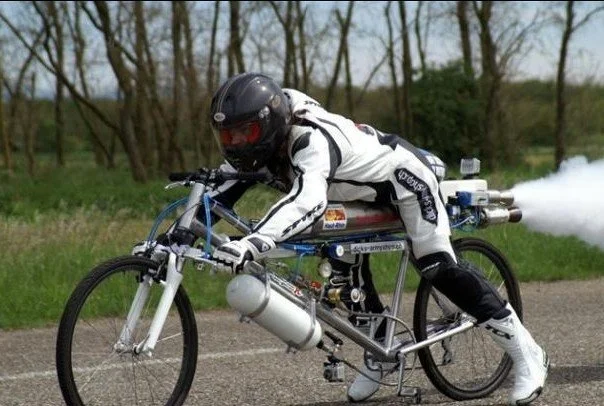Last year I spoke with a rider who had established a high level of fitness (CTL >130), but due to illness and other factors had seen this figure decline to just over half. Their question to me was, ”How quickly can I get back to my previous level?” At the time I replied “That depends” and I’ll stand by that answer. However, I think it is a question worthy of a detailed response.
Fitness is a funny word, and like “power” I’d love a dollar every time I hear it misused. As a coach, I view fitness as a rider’s current capacity for work. Not a very exciting definition I know, but if you are a Training Peaks user, the name says it all – “Chronic Training Load”. Strava simply calls it “Fitness”, but both are calculated by taking a weighted rolling average of your last six weeks’ training. If you train with power, this is calculated on your TSS for each ride. So a rider with a CTL of 70 has a weighted average of 70 TSS points per day over the previous six weeks. Points are weighted toward your most recent sessions because the training you did three days ago has more impact on your fitness (and fatigue) than a session you did three weeks ago.
But how do you move from a CTL of 70 to a CTL of 80 or 100 plus? And how quickly can you do it? The simple answer to the first question is that you must increase your average TSS.
Riders who have additional time can add to their training volume by including an extra session per week or adding additional time to their regular rides. There is no need to add intensity. Additional time at the same intensity will increase your TSS. You are simply training more, which is fine if you have the time.
Riders who are already squeezing in the hours, need to increase their intensity. This can be done by inserting intervals into your longer rides or including more work above your FTP during the week. Note TSS points are not calculated evenly. A TSS of 100 may represent one hour at FTP, but time below threshold is weighted less than time at or above FTP.
So how quickly can you expect to see your CTL increase? Again, that depends, but as a coach here are some of the factors I take into consideration.
The most important issue to remember here is that fitness has a fatigue cost. Repeat after me, “Fitness has a fatigue cost”. Got it? Good. Read on.
If an athlete has established a weekly TSS and their fitness has been stable (read stagnant) for some time, but they are otherwise healthy, I will increase their TSS about 10% a week for a couple of weeks. At a CTL of 70, that’s about 50 TSS points per week. Whether that is done through increasing volume or intensity comes back to what they are trying to achieve. But a typical cycle would include building TSS for three weeks before reducing it (unloading) for a week. During this time I would pay close attention to how the athlete is coping and adjust their load if necessary.
Although it is often said the more you do, the more you can do, a rider with a TSS of 90 would need to increase their weekly TSS by about 65 points per week to achieve a similar percentage gain as a rider with a CTL of 70. This highlights the fact that the fitter you are, the harder you have to work to improve.
It is important to understand and accept that some people have a greater capacity for higher training loads than others. The fact that the rider who asked me the initial question had a previous CTL of 130 may tempt them to increase their weekly TSS rapidly. I can see the logic. Having had a CTL of 130, a CTL of 90 is nothing so why not jump up to that. However, they also became ill and their fitness declined by half, so I want to know more. Was that due to poor nutrition and recovery? Did they get to this point too quickly and overtraining caught up with them? Did they peak for a major event and then motivation fell away? Were there other stress factors outside of training and are they still present?
That last one is important for busy, part time athletes. Many people fail to acknowledge the negative impact external factors and stressors have on their ability to increase their fitness. For example, adding 100 TSS points a week during your summer break may be very different to doing it at the same time you start a new job.
As well as monitoring weekly TSS and rider feedback, I also look at three other pieces of information. The first is an athlete’s “ramp rate”. Ramp rate is simply the weekly increase (or decrease) in CTL. The legendary Joe Friel recommends an increase of 5 – 8 CTL points per week during a build phase. Any more than this for an extended period and you may be flirting with overtraining. Note this increase in CTL is during a build phase. During your recovery weeks your CTL will decline and your ramp rate will be negative. However, this should be offset by improvement in your ACL and TSB or “Freshness” and “Form”.
An athlete’s Performance Management Chart (PMC) or “Fitness & Freshness Chart” can also provide visual clues about their rate of improvement and how their TSS is acquired. A chart that has numerous fine teeth and a gentle upward trend indicates multiple layers of fitness building in a sustainable manner. Ideally it will also have a small plateau or dip at regular intervals which indicate recovery periods.
A chart which has large teeth with steep ramps and sudden drops indicates inconsistency. It may also be a sign that the athlete’s hardest sessions are in fact too hard and require prolonged recovery where any gains are quickly lost. In such cases, I may alter the athlete’s training so their TSS is spread more evenly throughout their sessions with the aim of establishing a more sustainable ramp rate but ultimately a higher level of fitness.
Finally, by monitoring an athlete’s Training Stress Balance (TSB) or “Form” I can also check if their rate of improvement is sustainable. Joe Friel has written a brilliant article on this topic called “Managing Training Using TSB”. In this he refers to a TSB below -30 as “high risk” and advises that athletes should spend minimal time below this level. By monitoring your ramp rate and TSB and keeping them within the suggested ranges, you can improve your fitness at a reasonable, yet sustainable rate. Better still, you should aim to make these numbers your own. By honestly assessing your perceived level of fatigue, you can create your own limits rather than just accept generic guidelines. If you are tired and lethargic and have a scratchy throat with a ramp rate of +6 and a TSB of -24, I would consider you have found your limits and it’s time to dial it back. You could then aim for a ramp rate of +5 per build week and monitor your TSB so it stays above -20 and see how you progress. As they say,” training is an experiment with a sample of one”.
Like most fitness and performance questions, there is no simple answer to how quickly you can gain fitness. And although the vast majority of athletes are looking for a quick fix, the reality is patience and persistence will win in the long term. However, if you are aware of the key factors and combine this information with honest self-assessment, it is possible to find a sustainable rate that can take you well beyond your current level.
© Geoff Nash
CoLab Coaching

